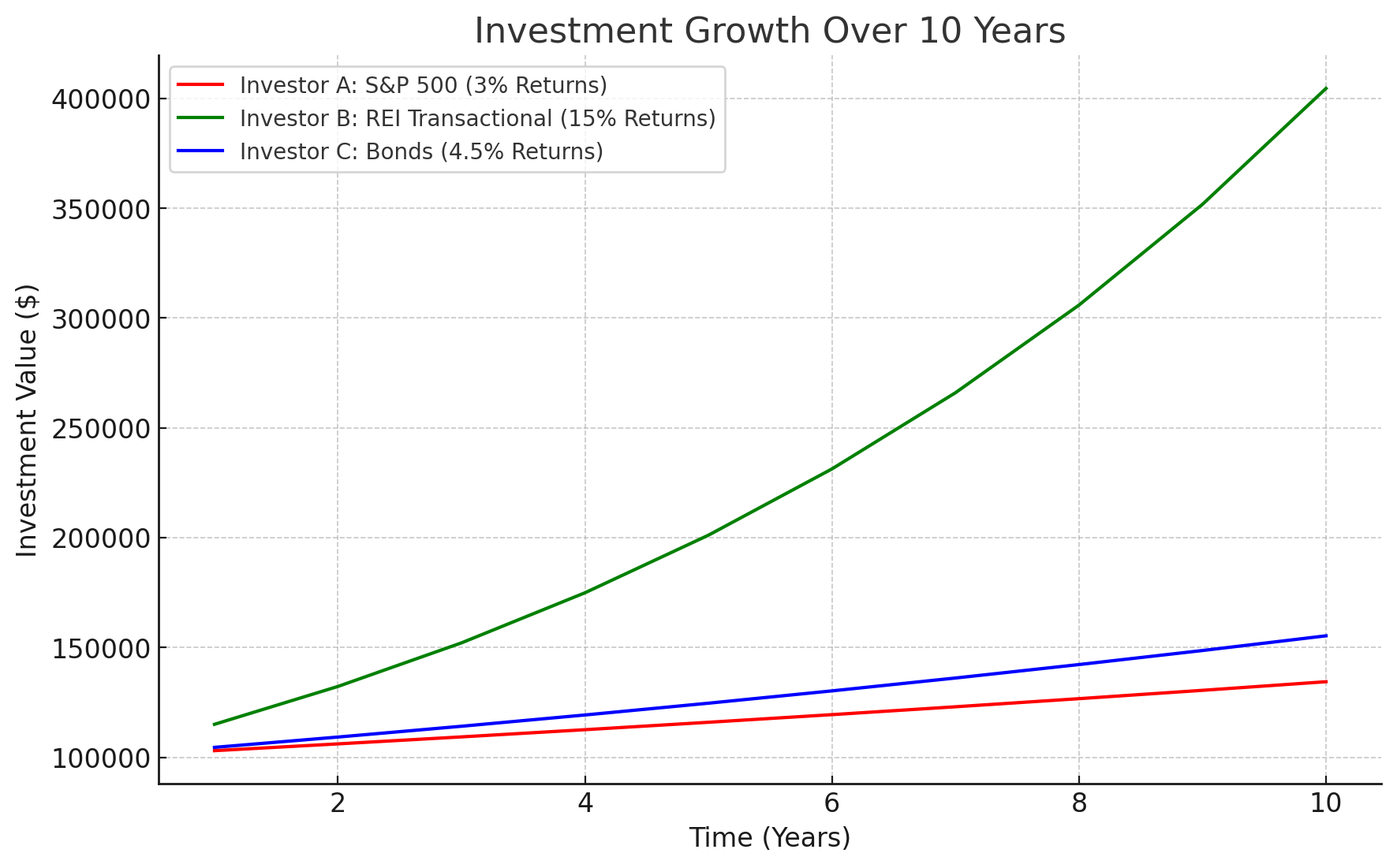The Broader Impact of Low Stock Market Returns
A projection like this from Goldman Sachs has larger implications beyond just your portfolio. Let's break down what this could mean for lending, real estate, and overall market dynamics:
Lending Market
When returns in equities are projected to be low, investors often look for safer or higher-yielding alternatives. This shift could lead to increased demand for investments like real estate debt funds, which offer bond-like stability but with a higher yield. As a result, we could see a decrease in interest rates for private lending, making it cheaper for borrowers to access funds. This is especially beneficial for sectors like real estate development, where lower borrowing costs can fuel growth.
Real Estate Valuation
The low return projection for equities also means that more investors may consider shifting capital into real estate. Real estate is historically seen as a hedge against inflation and often provides better returns during periods of stock market stagnation.(Real Estate as Inflation Hedge) With increased investor interest, we may see property valuations rise, driven by the demand for assets that offer both income and appreciation. Additionally, stable bond yields make real estate an attractive option for those seeking to maintain or grow their wealth.
What Should Investors Do?
When a significant player like Goldman Sachs makes a projection of this nature, it's a signal for investors to revisit their strategies. For many, relying solely on traditional equities may not be enough to achieve meaningful growth, especially when returns are only projected to keep pace with inflation. Diversification becomes more crucial than ever—spreading investments across asset classes like real estate, alternative funds, and fixed income can help to navigate these challenging market conditions.
Conclusion
Goldman Sachs' projection is a reminder that the future is uncertain, and while we can't predict exactly what will happen, we can prepare. The potential for low returns in the stock market means that investors need to think strategically about how to grow their wealth. Whether it's through higher-yielding alternatives like REI Transactional, safer options like bonds, or a mix of multiple asset classes, diversification is key. By focusing on making informed decisions and adapting to changing market conditions, you can set yourself up to outperform the broader market and safeguard your purchasing power in the years ahead.







